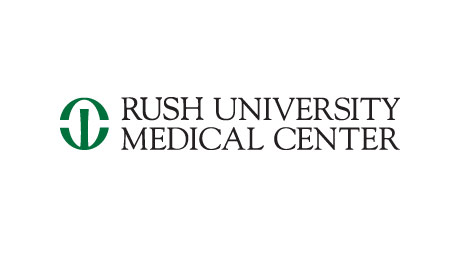Comparison of Negative Pressure Wound Therapy Versus Conventional Dressings for the Prevention of Wound Complications After Revision THA
| Status: | Recruiting |
|---|---|
| Healthy: | No |
| Age Range: | 18 - Any |
| Updated: | 6/13/2018 |
| Start Date: | April 28, 2017 |
| End Date: | October 28, 2020 |
| Contact: | Chris Culvern, MS |
| Email: | chris.culvern@rushortho.com |
| Phone: | (312)432-2470 |
Comparison of Negative Pressure Wound Therapy Versus Conventional Dressings for the Prevention of Wound Complications Following Revision Total Hip Arthroplasty: A Prospective, Randomized, Controlled Trial
Wound complications and surgical site infections following revision total joint arthroplasty
result in significant morbidity and cost. To the investigators knowledge, no prospective,
randomized controlled trials have examined the rate of wound complications, infection, and
reoperation following revision total hip arthroplasty when treated with negative pressure
wound therapy (NPWT) versus sterile dressings. The investigators hypothesize that the rate of
wound complications, infections, and subsequent procedures in patients undergoing revision
THA treatment will demonstrate a statistically and clinically relevant decrease when using
NPWT versus sterile dressing.
result in significant morbidity and cost. To the investigators knowledge, no prospective,
randomized controlled trials have examined the rate of wound complications, infection, and
reoperation following revision total hip arthroplasty when treated with negative pressure
wound therapy (NPWT) versus sterile dressings. The investigators hypothesize that the rate of
wound complications, infections, and subsequent procedures in patients undergoing revision
THA treatment will demonstrate a statistically and clinically relevant decrease when using
NPWT versus sterile dressing.
Wound complications and surgical site infections (SSI) following revision total joint
arthroplasty result in significant morbidity and cost. Persistent incisional drainage
following total joint arthroplasty (TJA) has been reported to occur in 1% to 3% of patients.
Drainage persisting greater than 48 hours has been reported as a risk factor for the
development of an acute periprosthetic joint infection (PJI), with each additional day of
wound drainage increasing the infection risk by 29-42%. Consequently, continued wound
drainage has been shown to potentially increase the economic burden through longer hospital
stays and subsequent surgical procedures. To the investigators knowledge, no prospective,
randomized controlled trials have examined the rate of wound complications, infection, and
reoperation following revision total hip arthroplasty when treated with NPWT versus sterile
dressings. The investigators hypothesize that the rate of wound complications, infections,
and subsequent procedures in patients undergoing revision THA treatment will demonstrate a
statistically and clinically relevant decrease when using NPWT versus sterile dressing. The
investigators will utilize a prospective, randomized, controlled study design to assess the
efficacy of negative pressure wound therapy (NPWT) on the rate of wound complications,
surgical site infections (SSIs), and reoperations after revision total hip arthroplasty
(THA). For 90 days after surgery, the wound complications, including wound dehiscence,
prolonged drainage for >7 days postoperatively, hematoma formation, surgical site infection,
or periprosthetic joint infection that requires postoperative interventions, and reoperation
will be tracked.
arthroplasty result in significant morbidity and cost. Persistent incisional drainage
following total joint arthroplasty (TJA) has been reported to occur in 1% to 3% of patients.
Drainage persisting greater than 48 hours has been reported as a risk factor for the
development of an acute periprosthetic joint infection (PJI), with each additional day of
wound drainage increasing the infection risk by 29-42%. Consequently, continued wound
drainage has been shown to potentially increase the economic burden through longer hospital
stays and subsequent surgical procedures. To the investigators knowledge, no prospective,
randomized controlled trials have examined the rate of wound complications, infection, and
reoperation following revision total hip arthroplasty when treated with NPWT versus sterile
dressings. The investigators hypothesize that the rate of wound complications, infections,
and subsequent procedures in patients undergoing revision THA treatment will demonstrate a
statistically and clinically relevant decrease when using NPWT versus sterile dressing. The
investigators will utilize a prospective, randomized, controlled study design to assess the
efficacy of negative pressure wound therapy (NPWT) on the rate of wound complications,
surgical site infections (SSIs), and reoperations after revision total hip arthroplasty
(THA). For 90 days after surgery, the wound complications, including wound dehiscence,
prolonged drainage for >7 days postoperatively, hematoma formation, surgical site infection,
or periprosthetic joint infection that requires postoperative interventions, and reoperation
will be tracked.
Inclusion Criteria:
- Patients > 18 years of age undergoing a revision total hip arthroplasty procedure to
include:
- Conversion of a prior open hip surgery (i.e. open reduction internal fixation of a
proximal femur fracture) to a total hip arthroplasty
- Aseptic revision for a diagnosis of component loosening, osteolysis, or revision
procedure for periprosthetic fracture that requires revision of a component of the THA
prosthesis (excluded isolated open reduction internal fixation of the fracture or
initial placement of a hemi- or total hip arthroplasty)
- Septic revision surgery including irrigation and debridement of a postoperative
infection or hematoma, one-stage exchange for acute postoperative infection,
explantation and placement of an antibiotic cement spacer
- Reimplantation of a THA following placement of an antibiotic-loaded cement spacer
- The incision can be closed primarily without muscle flaps or skin grafting
- Willingness to undergo randomization and return for all scheduled visits
Exclusion Criteria:
- Patients requiring a muscle flap or skin grafting for wound closure
- Pregnant or lactating female
- Known sensitivity to the study product components (adhesives, etc.)
- Allergy to silver
We found this trial at
1
site
1653 W. Congress Parkway
Chicago, Illinois 60612
Chicago, Illinois 60612
(312) 942-5000

Phone: 312-432-2470
Rush University Medical Center Rush University Medical Center encompasses a 664-bed hospital serving adults and...
Click here to add this to my saved trials